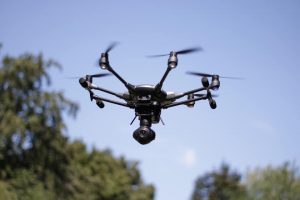Traffic Management Framework For Drones:

The Civil Aviation Ministry has notified a traffic management framework for drones.
- The framework has been issued under the Drone Rules 2021.
- Public and private third-party service providers will manage their movement in the airspace under 1,000 feet.
- The framework allows third-party service providers to give services such as registration, flight planning, dynamic deconfliction and access to supplementary data like weather, terrain and position of manned aircraft.
- Also, a set of supplementary service providers will also be permitted under the framework to provide services such as insurance and data analytics to support the UAS (unmanned aircraft system) Traffic Management (UTM) ecosystem.
- All drones (except Nano drones operating in the green zone) shall be required to mandatorily share their real-time location through the network to the Centre either directly or through third-party service providers.
- Service providers will be permitted to charge drone operators a service fee and a small portion of it might have to be shared with the Airports Authority of India (AAI), which manages the ATM.
- Current air traffic management (ATM) systems have not been designed to handle the traffic from unmanned aircraft.
- Also, Integration of unmanned aircraft in the Indian airspace using conventional means may require unmanned aircraft to be equipped with bulky and expensive hardware, which is neither feasible nor advisable.
- Moreover, traditional traffic management services provided by ATCs (air traffic controllers) for manned aircraft cannot be scaled for managing drone traffic which is expected to become at least 100 times higher since the traditional ATM is manual and requires human intervention.
- The Union government had on September 15 approved a production-linked incentive (PLI) scheme for drones and drone components with an allocation of Rs 120 crore spread over three financial years.
- The ministry had on August 25 notified the Drone Rules, 2021 that eased the regulation of drone operations in India by reducing the number of forms that need to be filled to operate them from 25 to five and decreasing the types of fees charged from the operator from 72 to four.




